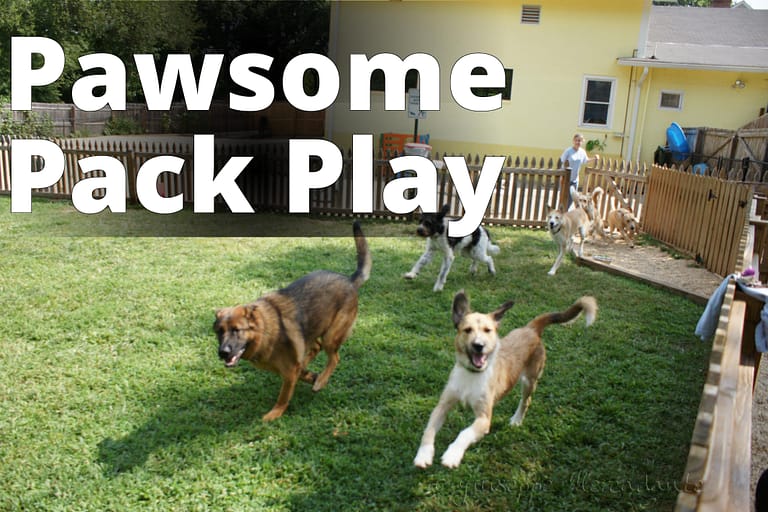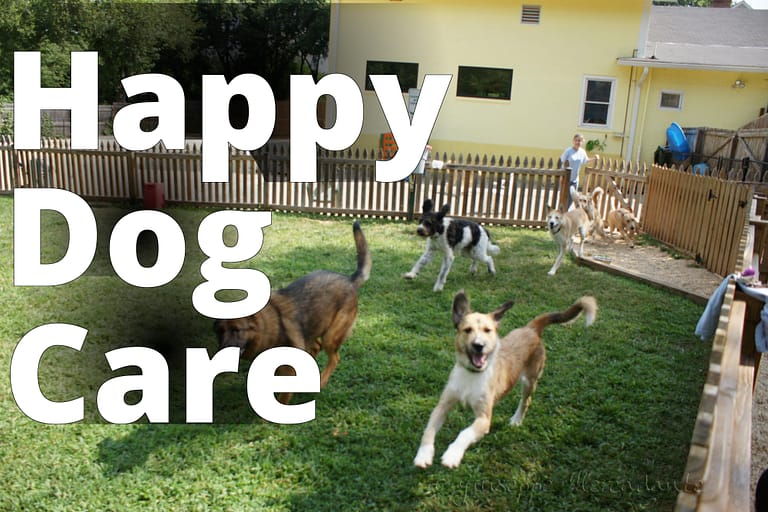From Puppies to Seniors: Your Complete Guide to Caring for Dogs
Are you looking for a comprehensive guide to dogs? Caring for a furry friend is a big responsibility that requires attention and care. From feeding and exercising to grooming and training, there’s a lot to consider when it comes to taking care of your canine companion. This complete guide to dogs covers everything from the history of domesticated dogs to caring for senior dogs. By the end of this guide, you’ll have all the information you need to become a better dog owner and provide your furry friend with the best possible care.
Overview of Guide to Dogs
This guide provides a comprehensive overview of caring for dogs. Whether you’re a first-time dog owner or have had dogs your whole life, you’ll find something new to learn. We’ll cover everything from the history of dogs to the different types of breeds, preparing for a dog, taking care of your dog, training and behavior, traveling with your dog, caring for senior dogs, and even dog sports and activities.
Our goal is to help you become a responsible and knowledgeable dog owner who can provide your furry friend with a happy and healthy life.
Guide to Dogs
- Covers the history of domesticated dogs and their evolution.
- Discusses different types of breeds, their unique characteristics, and considerations for choosing the right breed for your lifestyle.
- Provides comprehensive information on preparing for, taking care of, and training your dog, along with travel tips, caring for senior dogs, and popular dog sports and activities.

A Brief History of Domesticated Dogs
Dogs have been our faithful companions for thousands of years. Some historians estimate that dogs were first domesticated around 15,000 years ago. The exact origins of domesticated dogs are not clear, but it’s believed that early humans began breeding wild dogs for specific traits, such as hunting ability and loyalty.
Over time, dogs have become an integral part of human society, serving as protectors, companions, and helpers in a variety of ways. Today, dogs are widely considered to be members of the family, and many people can’t imagine life without their furry friends.

Different Types of Dog Breeds
There are hundreds of different dog breeds, each with unique characteristics and traits. Dogs can be classified into different groups based on their breed, including sporting dogs, non-sporting dogs, hounds, working dogs, herding dogs, and toy dogs. Each group has specific characteristics that make them well-suited for different types of owners and lifestyles.
When choosing a dog breed, it’s important to consider factors such as size, energy level, temperament, and grooming needs. Some breeds require a lot of exercise and playtime, while others are content to lounge around the house. Some breeds are great with kids, while others may be better suited for single people or couples.
Pros and Cons of Getting a Dog
Before getting a dog, it’s important to consider the pros and cons. On the one hand, dogs provide love, companionship, and can even improve your mental and physical health. They can also be a great way to meet new people and make friends. On the other hand, dogs require a lot of time, money, and effort to care for properly. They can be messy, destructive, and may even have health issues that require expensive vet care.
It’s important to weigh the pros and cons carefully to determine if you’re ready for the responsibility of owning a dog. If you’re not sure, consider volunteering at a local animal shelter or fostering a dog to get a better idea of what it’s like to care for a furry friend.

Preparing for a Dog
Once you’ve decided to get a dog, it’s important to prepare your home and yard for your new furry friend. This includes dog-proofing your home and yard, choosing the right breed for your lifestyle, and adopting or buying a dog.
When choosing a breed, consider factors such as size, energy level, and temperament. Some breeds are better suited for apartment living, while others require a lot of space to run and play. Once you’ve chosen a breed, it’s important to research reputable breeders or adoption agencies to find a healthy and happy dog.
Basic supplies you’ll need include food and water bowls, a leash and collar, a crate, and toys. It’s also a good idea to set up a designated space for your dog, such as a bed or crate, to help them feel safe and secure.

Taking Care of Your Dog
Once you bring your new furry friend home, it’s important to provide them with proper care and attention. This includes feeding and nutrition, exercise and playtime, grooming and hygiene, and regular vet check-ups.
Feeding your dog a balanced and nutritious diet is essential for their health and wellbeing. This includes choosing the right type of dog food, feeding them on a regular schedule, and controlling their portion sizes.
Exercise and playtime are also important for keeping your dog healthy and happy. Most dogs require daily exercise, such as walks or trips to the dog park, to burn off excess energy and stay mentally stimulated.
Grooming and hygiene are also important for keeping your dog healthy and happy. This includes bathing, brushing, nail trimming, and dental care. Regular vet check-ups are also essential for maintaining your dog’s health and catching any potential health issues early on.
Training and Behavior
Proper training and behavior are essential for keeping your dog and those around them safe and happy. This includes house training, basic obedience training, dealing with common behavior problems, and socialization.
House training involves teaching your dog where and when it’s appropriate to go potty. This can be done through crate training, potty training, and positive reinforcement.
Basic obedience training involves teaching your dog basic commands, such as sit, stay, come, and down. This can be done through positive reinforcement and consistency.
Dealing with common behavior problems, such as barking, biting, chewing, and jumping, requires patience and consistency. It’s important to understand the root cause of the behavior and work with your dog to correct it.
Socialization and interaction with people and other animals is also important for keeping your dog happy and well-adjusted. Properly introducing your dog to new people and animals can help prevent aggression, anxiety, and other behavior issues.
Traveling with Your Dog
If you enjoy traveling, you may want to bring your furry friend along for the ride. However, traveling with a dog requires careful planning and preparation.
Tips for road trips and air travel include safety considerations and preparation tips. This includes choosing the right type of carrier or crate, packing essential supplies, and ensuring your dog has the appropriate vaccinations and health certificates.
Choosing dog-friendly accommodations, such as hotels, vacation rentals, and campgrounds, is also important when traveling with your dog. Not all accommodations allow dogs, so it’s important to research ahead of time to find the right place for you and your furry friend.
Caring for Senior Dogs
As dogs age, they may require special care and attention. This includes changes in their diet, exercise routine, and health care needs.
Signs of aging in dogs include changes in behavior, health, and mobility. It’s important to watch for these signs and adjust your care routine accordingly.
Special care needs for senior dogs include diet, exercise, and health issues to consider. Senior dogs may require a more specialized diet to meet their changing nutritional needs. They may also require less exercise and more rest.
Health issues to watch out for in senior dogs include common health problems such as arthritis, cancer, and cognitive dysfunction syndrome.
Personal Story: Caring for My Senior Dog
As a dog owner, Ive always been aware of the responsibility that comes with owning a dog. My Labrador Retriever, Max, has been with me for over 12 years, and as hes grown older, Ive had to adapt my care and attention to suit his changing needs.
I first noticed signs of aging in Max when he was around 8 years old. He began to slow down on walks and was less interested in playing fetch. As he reached 10 years old, Max began to have difficulty jumping up onto the couch, and I noticed that his eyesight wasnt as good as it used to be.
To help Max stay healthy and comfortable in his old age, I made several changes to his care routine. I switched him to a senior dog food that was lower in calories and higher in joint-supporting nutrients. I also began to take him on shorter, more frequent walks, rather than long hikes or runs.
As Maxs mobility decreased, I invested in a high-quality orthopedic dog bed to provide him with extra support and comfort while he slept. I also began to brush his teeth more regularly and take him for more frequent vet check-ups to monitor his health.
Despite these changes, Max has continued to bring me joy and companionship every day. While caring for a senior dog can be challenging, the love and loyalty that they provide is immeasurable.

Popular Dog Breeds
As mentioned, there are hundreds of different dog breeds, each with unique characteristics and traits. Some popular breeds include the Labrador Retriever, Golden Retriever, Beagle, Bulldog, and Poodle.
Characteristics of each breed, such as size, temperament, energy level, grooming needs, and common health issues, can help you choose the right breed for your lifestyle.
Dog Sports and Activities
If you’re looking for fun and exciting ways to bond with your furry friend, dog sports and activities may be just what you need. Some popular dog sports and activities include obedience training, agility training, flyball, and dock diving.
Each sport and activity requires different levels of training and preparation, but all can be a great way to bond with your dog and improve their physical and mental health.
Conclusion
This guide to dogs has covered everything you need to know to become a responsible and knowledgeable dog owner who can provide your furry friend with the best possible care. Whether you’re a first-time dog owner or have had dogs your whole life, we hope you’ve learned something new.
Additional resources for dog owners include online resources, local dog clubs, and training classes. These resources can help you stay informed about the latest developments in dog care and provide you with support and guidance as you care for your furry friend.
In conclusion, dogs provide companionship, love, and loyalty, and enhance our lives in countless ways. If you’re considering getting a dog, we encourage you to consider adopting a dog from a shelter. Shelters are full of loving dogs who are looking for their forever homes, and adopting a dog can be one of the most rewarding experiences of your life.
Insider Tip:
When adopting or buying a dog, it’s important to research reputable breeders or adoption agencies. Ask questions and visit the facility in person to ensure that the dog is being well-cared for. Look for organizations and resources that can help you find healthy and happy dogs to bring into your home.
Answers To Common Questions
Who should get a dog?
Anyone who has time and love to give.
What are the most popular dog breeds?
Labrador Retriever, German Shepherd, and Golden Retriever.
How do I train my new puppy?
Consistency, positive reinforcement, and patience.
Who can help me choose the right dog breed?
A reputable breeder or animal shelter staff.
What if I don’t have enough space for a big dog?
Consider a smaller breed or a cat instead.
How much exercise do dogs need daily?
At least 30 minutes of physical activity per day.




Leave a Reply